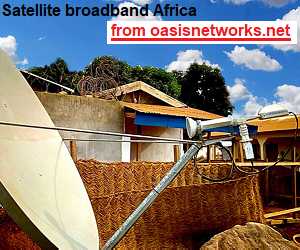Advertisment:


Satellite Internet Forum.
Welcome, Guest. Forum rules.To search this site click here > SATSIG search
| Home Login Register |
| Satellite Internet forum › General and other topics › Finding Satellite Beacon |
|
Pages: 1
|
Finding Satellite Beacon(Read 11019 times) |
|
VSATEngineer
Member
★★ Offline Posts: 24 |
Dec 1st, 2015 at 1:37pm
|
| Back to top |
« Last Edit: Dec 10th, 2015 at 12:01pm by Admin1 »
IP Logged
|
|
Admin1
YaBB Admin
★★★★★ Offline Posts: 1224 |
Reply #1 - Dec 1st, 2015 at 6:10pm
|
| Back to top |
« Last Edit: Dec 10th, 2015 at 12:01pm by Admin1 »
IP Logged
|
|
VSATEngineer
Member
★★ Offline Posts: 24 |
Reply #2 - Dec 9th, 2015 at 8:57am
|
| Back to top |
IP Logged
|
|
Admin1
YaBB Admin
★★★★★ Offline Posts: 1224 |
Reply #3 - Dec 10th, 2015 at 12:00pm
|
| Back to top |
« Last Edit: Dec 10th, 2015 at 1:56pm by Admin1 »
IP Logged
|
|
Pages: 1
|
Email me: eric@satsig.net
Powered by YaBB 2.5.2!
YaBB Forum Software © 2000-. All Rights Reserved.
Disclaimer, Terms of Use and Privacy Forum User Agreement Forum rules Cookie policy.

